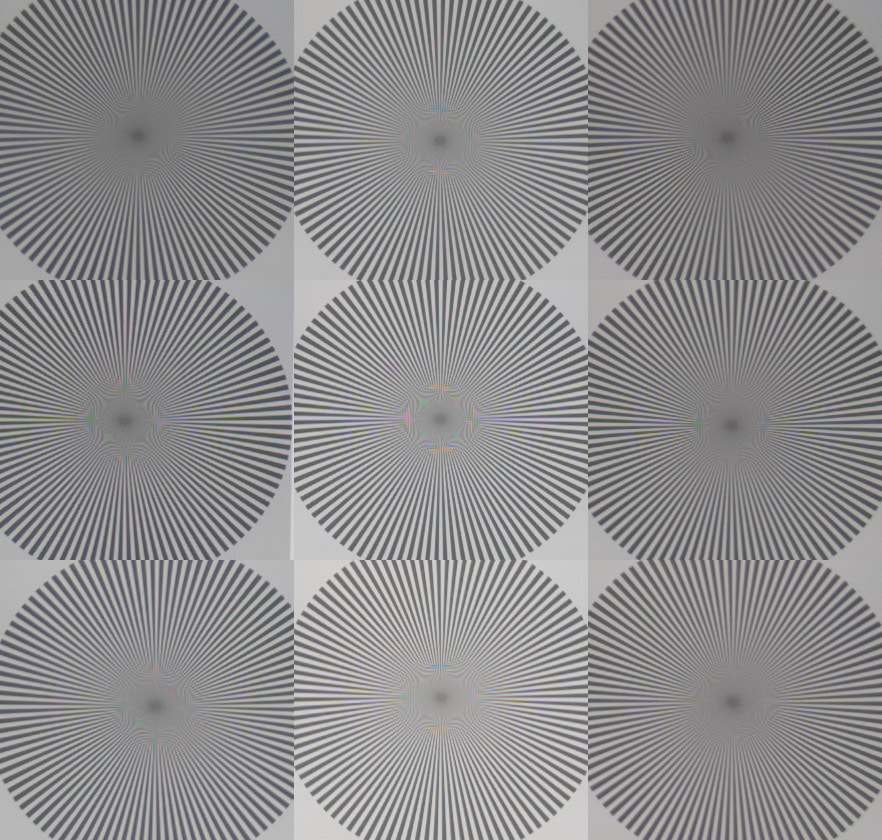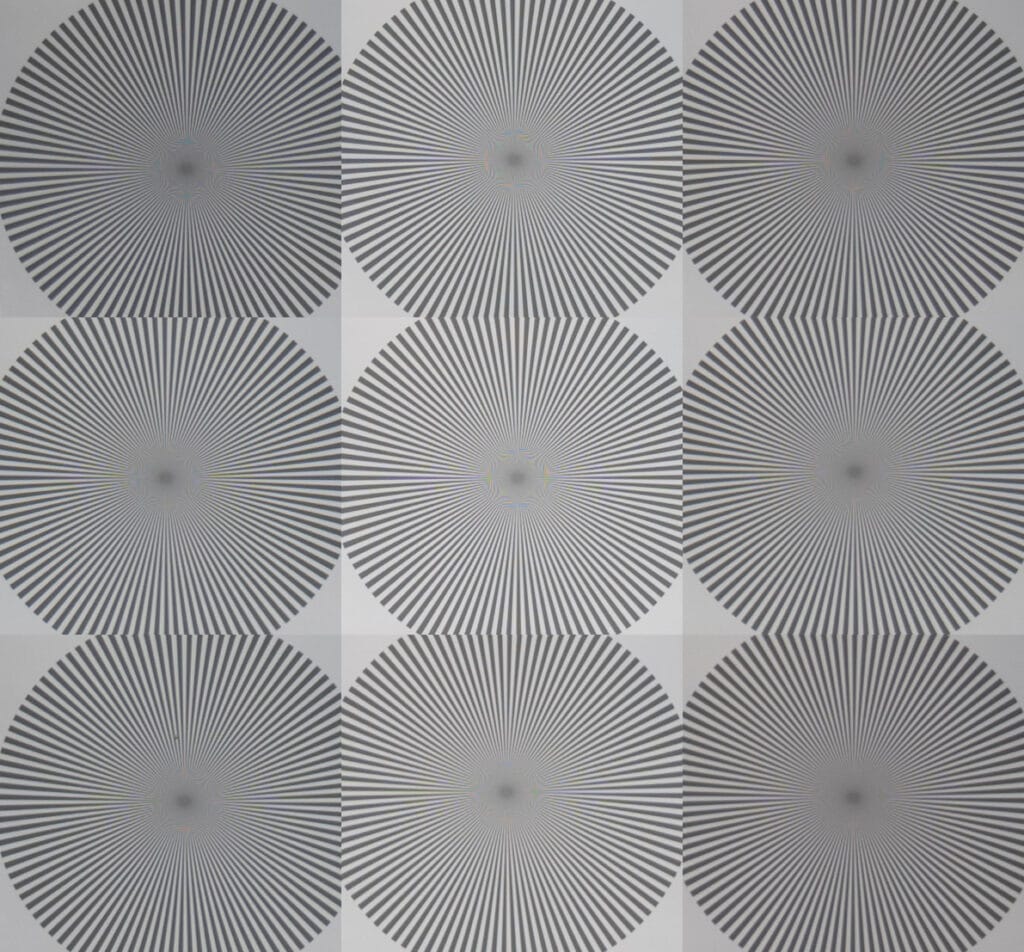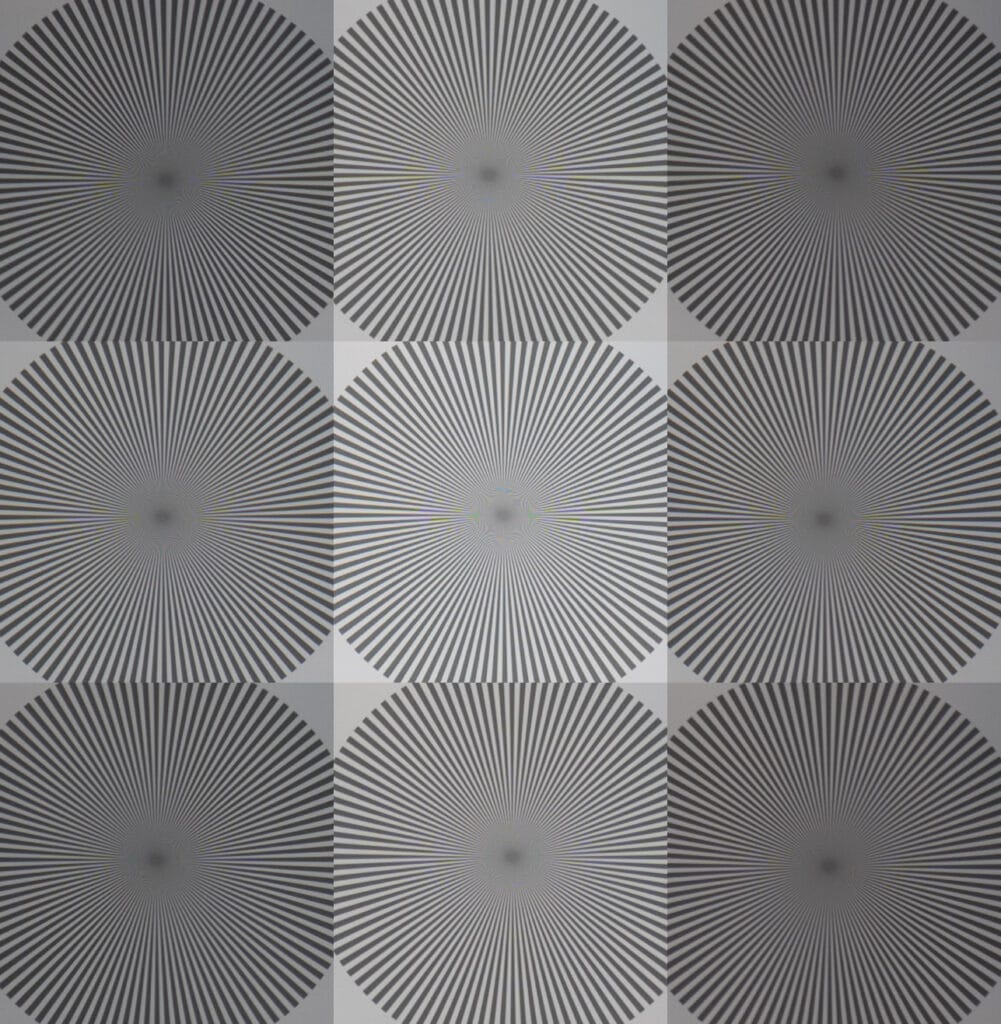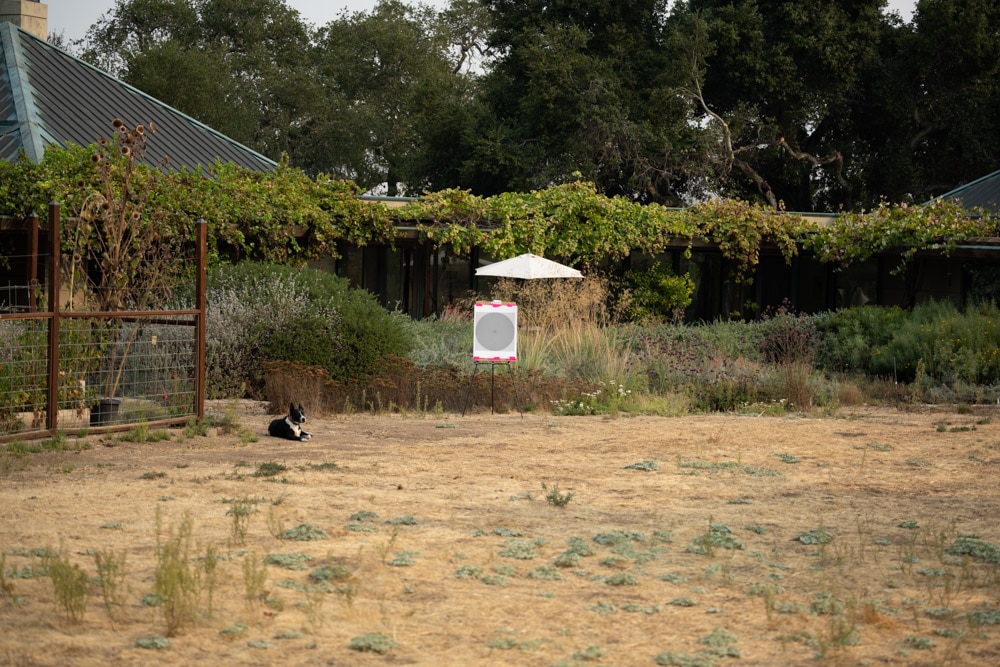I received the Nikon 70-200mm f/2.8 S lens for Zx cameras yesterday. First impressions:
- About the same size as the 70-200mm f/2.8E, but noticeably lighter.
- The traditional slide switches on the barrel are MIA, and their function is handled by menu selections in the camera; I don’t think this is a good move.
- Has the window at the top of the lens that can be used to display distance, focal length, etc. that we saw on the 24-70/2.8S.
- Comes with the thin cloth sock, even though the box says there’s a case inside.
I performed my usual lens screening test. Parameters:
- Camera: Nikon Z7
- File format lossless compressed raw, 14-bit precision
- Tested at 70, 105, and 200 mm.
- Target distance 60 meters at 200 mm, 40 meters at 105 and 70 mm.
- RRS legs, Arca-Swiss C1
- 2-second self timer.
- 3 sets of 9 images at each focal length, picked the best set in post
- Manually focused at center shot of each set, left focus alone for the side and corner shots
- ISO 64
- F/2.8
- 1/800 second.
- EFCS
Developed in Lightroom with the following settings:
- Adobe Color Profile
- Sharpening: amount 20, radius 1, detail 0
- White balanced to grey background of Siemens star
- Slight Exposure boost
- All other settings at default.
Manual focusing was a bit dicey thanks to the Z7’s truly abominable focus by wire algorithm combined with the sensitivity of the lens ring. The Z7’s FBW is as bad as the Sony NEX 5’s. Sony has come a long way since then. Nikon should have been paying attention.
Here’s a full frame shot at 70 mm.
1:1 crops at 70 mm, wide open follow. This is a composite of all nine images in the best series, with the sidea and corners offset so you can see which is which.

This is a fine result. The lower right corner is a little softer than the upper left. I’ve never found a perfect lens with this test, and perfect lenses are as scarce as hen’s teeth, but this isn’t far off. Corner falloff is not bad.
At 105 mm:

This looks fine, too.
At 200 mm.

Corner falloff is a lot worse. I’m surprised at this. You’d think this would be one place where the big throat of the Z mount would make a difference.
At all three focal lengths, the lens is capable of paying down detail on the sensor that the sensor can’t resolve, even in the corners, wide open. This lens probably has some focus curvature, so if you were focusing in the corners, it would be even sharper there.

Erik Kaffehr says
Nice to see you posting again! It seems that zoom is a nice lens.
It seems that you mostly get lenses that are OK!
Best regards
Erik